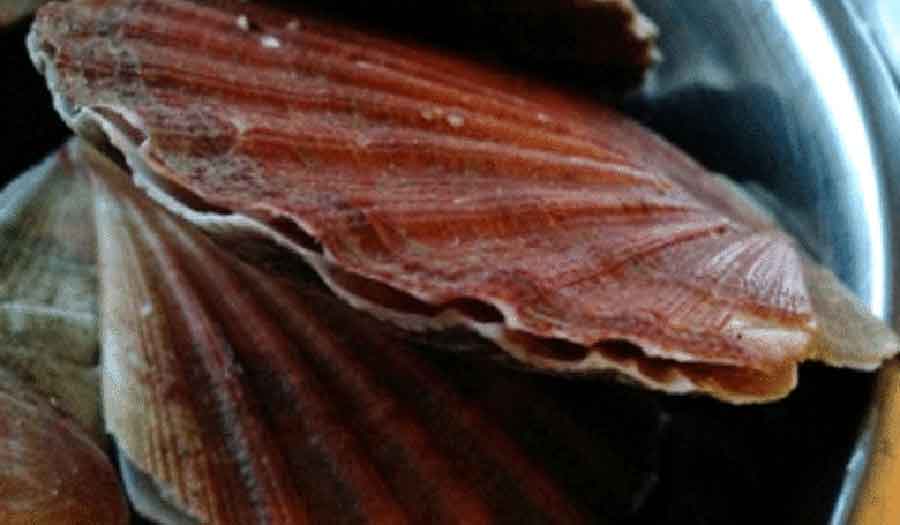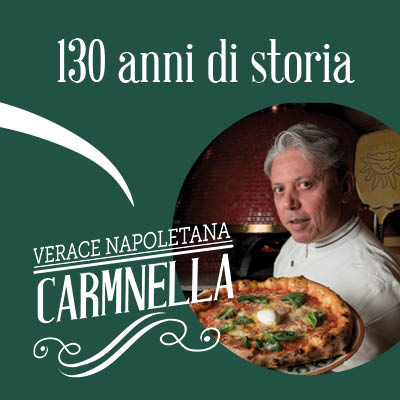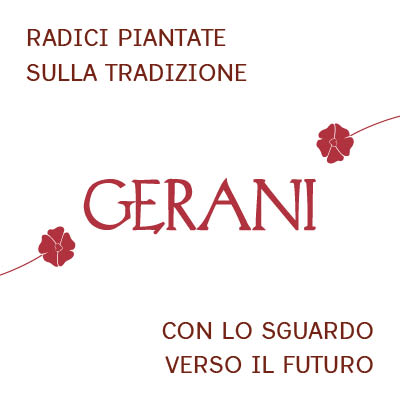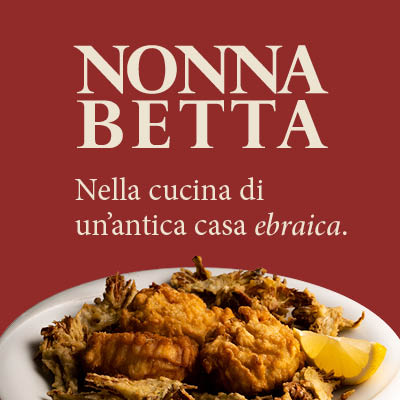Questo articolo è stato scritto in una settimana in cui la comunità di pescatori della costa del sud dell’Inghilterra piangono l’annegamento di quattro pescatori che si sono inabissati con la loro barca battente bandiera belga, la Morgenster.
La tragedia è accaduta durante nei temibili flutti del canale Off Dungeness (di fronte al Kent).
Non è questo il momento di ricordare a noi stessi che il pesce fresco e i frutti di mare sono un dono prezioso che ci ha portato dal mare spesso gente che per lavoro rischia la vita?
Imparo nel mercato che sempre più i pescatori e le loro barche si perdono nelle zone di pesca del Nord Atlantico orientale maggiormente nei mesi di gennaio e febbraio che di quanto accada in tutte le restanti dieci mesi dell’anno.
Pesce e frutti di mare che vedete etichettati ‘NEA’ provengono da quei mari.
Parliamo di questo al pari di altri alimenti, come carne e latticini, i quali arrivano sulle nostre tavole senza che vi sia nessuno che corre tali costanti pericoli.
“Sì certo, ma i macellai e gli agricoltori vengono massacrati dai supermercati – e questo è una morte lenta”, osserva Bob il pescivendolo con un cenno d’intesa.
Pausa di riflessione e un momento di riflessione. Siamo d’accordo.
Le capesante sono davvero nel loro periodo migliore qui – la stagione si è aperta nel mese di novembre, ma ora è un momento speciale.
Nella Rye Bay le capesante sono forse le migliori di tutte per la loro dolcezza e consistenza – sono pescate dal fondo del mare a circa 70-80 metri di profondità.
Qui le correnti realizzano il perfetta grado di movimento dei fondali idoneo a mantenere i molluschi alimentati ed in movimento.
I migliori sono di solito di minimo tre anni di età – gli anelli sul guscio confermano la loro età (il calcolo è molto simile a quello che si fa in un tronco d’albero o nei denti di cavallo per determinare l’età).
Le Capesante non strisciano o vivono in una tana ma, grazie ad un adduttore altamente sviluppato, aprono e chiudono il guscio e, con tale movimento, si spingono attraverso l’acqua.
Il nome giapponese per capesante letteralmente si traduce come ‘pesce vela’, che descrive perfettamente la maniera del suo movimento con una conchiglia sollevata.
Su tale particolarità è esemplificativo il cortometraggio inviatomi da Luca Tonon che ha iniziato la vita come un pescatore sulla Laguna di Venezia:
La varietà di Rye Bay sono le Pecten Maximus – il grande pettine del Nord Atlantico che si trova dalla Norvegia fino alle coste atlantiche di Spagna e Portogallo.
Nascono nelle acque al largo Spagna ed è per questo che la conchiglia è il simbolo di Santiago de Compostela e, quindi anche dei pellegrini che camminano a convergere lì lungo il Cammino di Santiago – noto come il Camino – . Il cammino è tracciato con conchiglie in tutta Europa.
In 20 anni o giù di lì, per numero di pellegrini è da annoverare come il terzo più importante dei pellegrinaggi medievali – Roma e Gerusalemme sono rispettivamente primo e secondo – con numeri che sono saliti da centinaia a molte migliaia – poco meno di 240.000 nel 2014 secondo l’archivio ufficiale di Santiago.
Molti di loro portano una conchiglia – alcuni la usano come una ciotola di fortuna per l’acqua potabile dalle sorgenti che si trovano lungo il loro camino come hanno fatto altri nei secoli precedenti.
Il libro di David D. Downie ‘Da Parigi ai Pirenei’ è una lettura piena di gioia di incontri lungo parte della strada che dalla Rue St Jacques di Parigi va giù attraverso la Borgogna.
Come precursore, Downie aveva già scritto un capitolo del suo aggiornamento 2011 della sua guida ‘Paris, Paris’ titolo ‘Hit the Road Jacques’, e quindi si può facilmente capire che cosa cercasse lungo il suo camino, camminando come dice apertamente come un pellegrino scettico.
Il pettine, come sappiamo, è la Coquille St Jacques in Francia – letteralmente il guscio di San Giacomo – e per lo più chiamato semplicemente St Jacques nel menu dei locali francesi.
Tale stretta connessione con il santo si ritrova con gli italiani che li chiamano Capesante – alla lettera mantello del Santo.
Il mio “incontro” con San Giacomo è stato quello del Deptford Market, luogo di per sé sufficiente a giustificare poco un pellegrinaggio ma più una deviazione speciale. Qui c’erano scatole di capesante freschissime provenienti da Rye Bay, che stavano vendendo a £ 9 alla dozzina nel guscio – che poi in questi luoghi è l’unico modo per comprarli.
In Francia si comprano a peso, quindi quello di Deptford è decisamente più economico come metodo di acquisto.
Vado in pescheria da Bob che mi dice “Vuoi Tesco o Heinz? Sto parlando di fagioli? Amo il modo in cui il confronto viene fatto – un alimento umile con commenti sulla qualità nello stesso tempo.
Le nostre sono, nelle parole del commerciante, le Heinz delle capesante – il nostro uomo Bob il pescatore spiega i suoi prezzi e non scende a compromessi sulla qualità. So quello che paga e quello che vende a quel prezzo. La sua non è la pescheria di un avido commerciante. Lui è felice quando siamo felici e la clientela ritorna ogni settimana. Londra ha troppe poche pescherie (e buone macellerie indipendenti), e questo è il motivo per il quale quella di Bob deve essere sostenuta se vuole sopravvivere.
Le capesante devono essere pulite bene.
Aprite la conchiglia allentando il muscolo con un coltello affilato – io preferisco far scorrere in lungo il coltellino sulla parte piatta del guscio. Una volta aperto, tagliate il muscolo principale e il corallo.
Tutto il resto, ma questi due pezzi dovrebbero essere tirato via prima che la carne bianca e corallo arancione sono sciacquati e ripuliti da eventuali residui solidi. Essi devono poi essere asciugati su carta in modo da cuocere perfettamente.
Le capesante fresche vendute pronte sgusciate sono un’opzione – ma chiamiamolo un’opzione di seconda classe.
Come sopra, il pronto sgusciato deve essere asciugato bene perchè di sicuro essi sarà conservato in acqua salmastra.
no dei trucchi più frequenti dei truffatori è quello di immergere per una notte intera in acqua dolce i frutti di mare per renderli più grassocci e maggiormente pesanti.
Cucinare le capesante è una questione di preferenza. I cinesi amano cuociono a vapore lasciandole ancora attaccate al guscio. Altri le fanno arrosto, alla griglia o a sauté – qualunque sia il metodo, deve essere caldo e veloce se vogliamo tenere su il loro sapore fresco di mare essenziale.
Le arance rosse di Sicilia ora di stagione, fanno un bell’abbinamento.
Quello con il pompelmo rosa è un altro abbinamento da provare – spesso dimentichiamo il pompelmo nella nostra cucina.
Avvolto e fritto in nella pancetta a fette molto sottili – meglio ancora se bacon – è un altro piatto tradizionale di Londra come da Sweeting e da Gow.
Molti chef eliminano il corallo – alcuni dicono che hanno paura che scoppi con il calore alto, altri dicono che li trovano sgradevoli. A me piace servirlo così come è. La dolce cremosità del corallo è perfetta.
Il mio metodo preferito di cottura è in padella a rovente a fiamma alta per 3-4 ” per lato.
Per farle come le faccio io basta tenere le capesante a temperatura ambiente e leggermente ricoperte con olio d’oliva.
Non mettere l’olio nella padella, sempre e solo il frutto da scottare.
In una padella calda per 2-3 ‘, a seconda dello spessore di ogni singolo pezzo. Cuocete solo da un lato solo su un lato e servite subito.
Ho imparato a far così lavorando affianco ad un cuoco in un workshop a Longhouse prima del 1990.
A metà cottura aggiungere una noce di buon burro di fattoria (sia salato o crema di burro a vostro gusto – io preferisco il burro salato) e delicatamente spostarlo la padella di mescolare con il succo delle capesante.
Poggiate le capesante su carta assorbente da cucina. Mettetele in un piatto e irroratele con succo di arancia e pompelmo. Se volete che accompagnino un piatto principale servitele con riso al burro, spinaci, bietole o al vapore e patate novelle. Una macinata di pepe nero ne esalterà il sapore
Un altro modo per esaltarle è con la pasta – preferibilmente con le tagliatelle.
Abbiamo 4 minuti di tempo per la cottura della pasta e altrettanti per preparare le capesante, così in una padella calda lasciamo andare dei minuscoli dadi di pancetta e un filo d’olio.
Due minuti e aggiungiamo le capesante con il corallo.
La pasta va appena scolata in quanto abbiamo bisogno dell’acqua di cottura per mantecare il piatto.
Infine, versiamo il succo di due arance rosse spremute – e qualche scorzetta se le arance non sono trattate.
Mantechiamo per un minuto finchè l’acqua di cottura non evapora e serviamo. A piacimento una macinata di pepe.
Le Capesante fresche possono essere anche un bel piatto di crudi di pesce – il muscolo affettato fine e condito con olio e limone. Ma devono essere fresche. Qui vale il detto dei giapponesi che: il primo giorno sashimi (crudo), il secondo giorno cotto, il terzo giorno per il gatto.
Nota: a Rye Bay le capesante sono pescate con la rete da piccole barche locali (meno di 10 metri) e il fondo del mare è costantemente monitorato attentamente per evitare danni.
Ai fini del gusto il flusso della marea è essenziale per lo sviluppo di un pettine di mare alla perfezione.
Questa è la fortuna di Rye Bay.
Se venite nei mesi estivi un’altra specialità locale è la passera di mare.
di Gareth Jones
Traduzione libera Giustino Catalano
[slideshow_deploy id=’9580′]
English Version
This is written in a week when the south coast fishing community mourn the drowning of four fishermen who went down with their Belgian registered boat, the Morgenster. The tragedy happened during what the life boat men described as perilous, fearsome seas out in the Channel off Dungeness (Kent).
Is this not time to remind ourselves that fresh wild fish and shellfish are a precious gift brought to us from the sea by the bravest of all who bring us food?
I learn in the market that more fishermen and their boats are lost in the North Eastern Atlantic fishing grounds in January and February than in all the remaining ten months of the year. Fish and seafood you see labelled ‘N.E.A.’ will have come from those seas.
We talk of this and how other foods like meat and dairy come to us without such perils. “Yes sure, but the butchers and farmers are being slaughtered by the supermarkets – and that’s a slower death,” remarks our man, Bob Fish with a knowing nod. Pause for thought and a moment of reflection. We agree.
Scallops are really coming into their own – the season opened in November, but now is a special time. Rye Bay scallops carry a tag of special excellence for their sweetness and texture – they are fished from the sea bed at around 70-80′ depth. Here the currents bring about the perfect degree of movement to keep the molluscs fed and exercised. The best are usually three years old – the rings on the shell confirm their age, much like those in a tree trunk or horse’s teeth.
According to fish man extraordinaire, Alan Davidson, in his Oxford Companion to Food: ‘Scallops do not crawl or burrow, so do not have a large ‘foot’. Instead, they have a highly developed adductor muscle, by which they open and close their shells and propel themselves through the water.
The Japanese name for scallop translates literally as ‘full-sail fish‘, describing perfectly the manner of its movement with one shell raised.’ If in doubt, look at this short film sent ot me by Luca Tonon who began life as a fisherman on the Venice Lagoon: http://youtu.be/FEAJ7i1j5uM
Ours from Rye Bay are Pecten Maximus – the great scallop of the North Atlantic which is found from Norway down to the Atlantic coasts of Spain and Portugal.
That they flourish in the seas off Spain is why the scallop shell is the symbol of Santiago de Compostela and, so too of the pilgrims who walk to converge there along the Way of St James – known as the camino – found marked out with scallop shells all across Europe. In 20 or so years, the numbers walking the third most important of Medieval pilgrimages – Rome and Jerusalem being nos 1 and 2 – have risen from hundreds to many thousands – just short of 240,000 in 2014 according to the official Santiago archive. Many to most will carry a scallop shell – some will use it as a makeshift bowl for drinking water from springs found along their camino as have others for centuries before.
David D Downie’s book ‘From Paris to the Pyrenees’ is a joy-filled read of encounters along part of the way from the Rue St Jacques in Paris and on down through Burgundy. As a precursor, Downie had already written a chapter in his 2011 update of his ‘Paris, Paris’ guide entitled ‘Hit the Road Jacques’, so one could guess what was to come on his camino, walking as he openly says as a skeptical pilgrim.
The scallop, as we know, is the Coquille St Jacques in France – literally the shell of St James – and mostly called simply St Jacques on menu’s. Such a saintly connection stays with the Italians who call them Capesante – the saint’s hood or cape.
My way of St James was to Deptford Market, itself historical enough to warrant less a pilgrimage and more a special detour. Here were boxes of fresh landed live scallops from Rye Bay which were making £9 a dozen in the shell – the only way to buy them. In France we buy them by weight, so the Deptford way is easier to cater.
Hear this says Bob. “You want Tesco or Heinz? I’m talking baked beans?” asked the fish trader in Newhaven. Love the way the comparison is made – a lowly food with comment on quality in alongside. Ours are, in the trader’s words, the Heinz of scallops – Our man Bob Fish explains his prices and never compromises on quality. I know what he pays and what he sells at. This is no greedy fishmonger. He’s happy when we are happy and the same faces are at his pitch to buy every week. London has far too few fishmongers (and good independent butchers), so Bob Fish must be supported if he is to stay.
Today was specially busy as Chinese mothers and daughters are anxiously asking about fish for the New Year weekend, still some days off (February 19th – the Year of the Sheep, as you ask). Others looked at the £5 bowls of fresh lemon soles, plaice, sprats, mackerel and whiting. Live crabs were focused on escape at £5 for two or 5 for £10. A Chinese mother goes through the box like she’s looking for a cotton reel of a certain colour.
“We’ve silver whiting and pout whiting,” points out Tony Fish.
There’s also ‘I don’t mind whiting’ says Fella (my local name).
Scallops were the stars of today.
Scallops must be cleaned well. Open the shell by releasing the muscle with a sharp knife – I prefer to slide in alongside the flat shell and the scallop will open like sesame. Once open, cut away the main muscle and coral. All else but these two pieces should be pulled away before the white meat and orange coral are rinsed clean of any remaining debris. They should then be dried on paper so as to cook perfectly.
Fresh scallops sold ready-shucked are an option – but let’s call it a 2nd class option as preparing your own has you engaging with the beauty you are about to cook and devour with friends. As above, the ready shucked must be patted dry as for sure they’ll be sitting in briny water. Be knowing, rogue traders will soak their scallops in water overnight so as to plump them up and increase their weight.
Cooking scallops is a matter of preference. The Chinese like to steam them still attached the the shell. Others roast, grill or sauté – whatever the method, it must be hot and quick if we are to hold onto their essential sea fresh flavour.
Gastropubs love to overpower them with chorizo, black pudding, grated farmhouse cheese and goodness knows what else. As with all fresh landed fish and shellfish, I prefer to revere the scallop and keep it simple.
Citrus is a specially good partner and with Sicilian blood oranges now in season, they make for a fine pairing. Rosé grapefruit is another to try – we too often forget the grapefuit in our cooking. Wrapped and fried in very thin sliced streaky bacon – better still pancetta – is another old favourite of London’s traditional oyster houses like Sweeting’s and Gow’s.
Chefs eschew the coral – some say they are scared of it bursting in high heat, others say they find it unsightly. Moving on, I like to serve one with the other as Nature intended. The sweet creaminess of the coral is perfect foil to the delicate white flesh of the muscle.
Searing is my preferred cooking way. Heat a dry heavy sauté pan or iron skillet – it’s hot when you can no longer hold you hand 3-4″ above the pan for longer than 5 seconds.
Have the scallops at room temperature and lightly coated with olive oil. Do not put oil in the pan, only ever on the item to be seared. Also – and it’s all don’t’s today – no seasoning. Why so many chefs insist on salting and peppering is beyond me – apart from the modest, manic drama for the close-up TV camera.
Into a hot pan for 2-3′, depending on depth of each piece. Less time is always better than more. Cook only on the one side and serve seared face up. I learned that from working alongside a chef at a Longhouse workshop back in the early 1990s and have never looked back. When I see chefs flip their scallops I cringe at thought of the toughened result.
Half way through cooking add a knob of good farm butter (whether salted or cream is your choice – salted is mine) and gently move it around the pan to mix with the scallop jus. Remove the scallops onto kitchen paper. Squeeze in either the juice of blood orange or grapefruit, swirl and stir before napping over the plated scallops. If as a first plate, do no more. For a main plate serve with buttered rice, spinach, chard or steamed new waxy potatoes. Season at the table – unlikely salt will be needed; fresh ground black pepper is essential.
Another way is pasta – and best is a fine, light tagliatelle. With scallops prepped, we have 4′ cooking time for the pasta when to prepare the fish – so into a hot skillet go tiny dice of pancetta and a little olive oil. Two minutes in, and it’s in with the whole corals and quartered muscles. The pasta then comes across in a sieve so is only loosely drained – we need the cooking water to moisten the dish. Finally pour in the juice of two freshly squeezed blood oranges – and some zest if the oranges are unwaxed. Cook on for a quick minute moving the pan all the while – then serve. Only fresh cracked black pepper needed.
Fresh scallops make a fine dish of crudo – the muscle sliced fine and dressed with oil and lemon. As the Japanese might say: day one for sashimi (crudo), day two for cooked, day three for the cat.
With Chinese New Year approaching find a good place for Dim Sum and choose some fresh scallop Chueng Fun – sometimes described as a lasagne of steamed rice flour pasta. Let me be first to wish you ‘Kung Hay Fat Choy’ – or the equally Chinese toast of ‘Bottom’s Up’ to all those who get down to to the the South Coast and the Rye Bay Scallop Week – February 21st to March 1st. Maybe see you in the ‘Wipers’**.
Did someone mention Blue Collar Gastronomy?
NOTE: Rye Bay scallops are fished by net from small and locally registered day boats (less than 10 metres) and the sea bed is constantly carefully monitored to prevent damage. The ‘sleb chef obsession with ‘diver scallops’ is fine for those found in shallow waters.
For taste, tidal flow is essential for a scallop’s development to perfection. This is the key to Rye Bay. Come the summer months, the Rye Bay plaice are another local speciality.
**The ‘Wipers’ is local speak for the Yprès Castle Inn on Gungarden – TN31 7HH.
by Gareth Jones

















